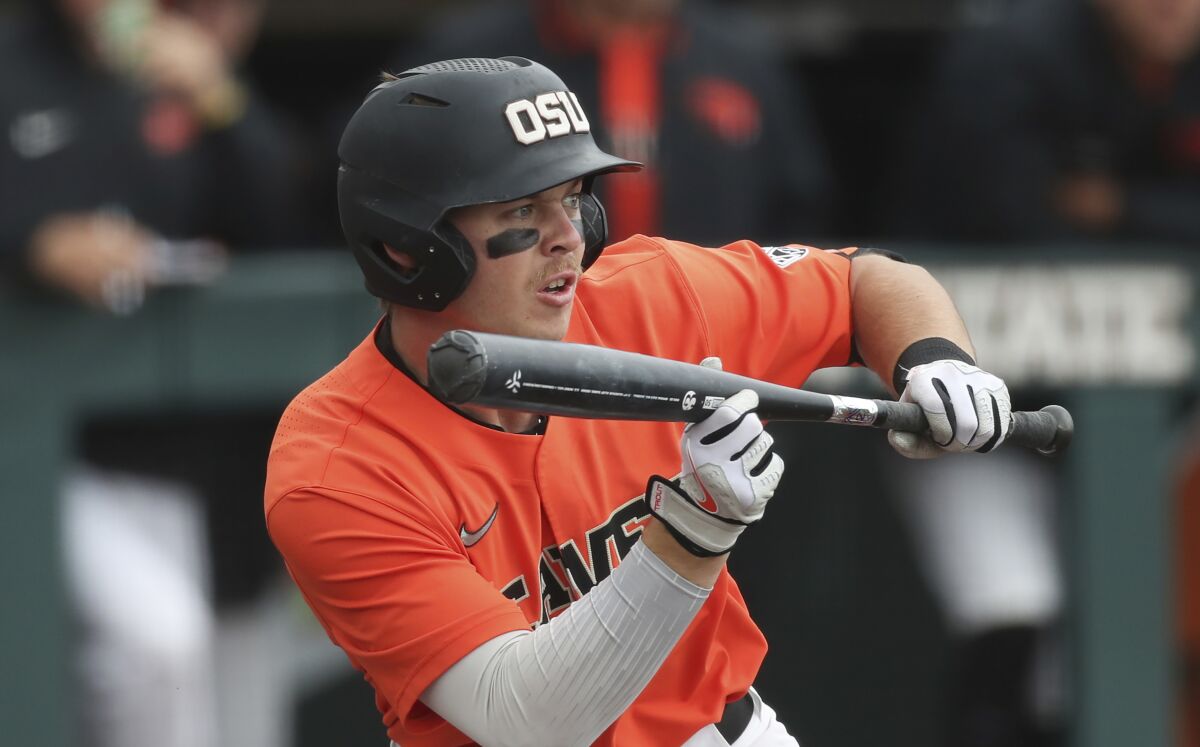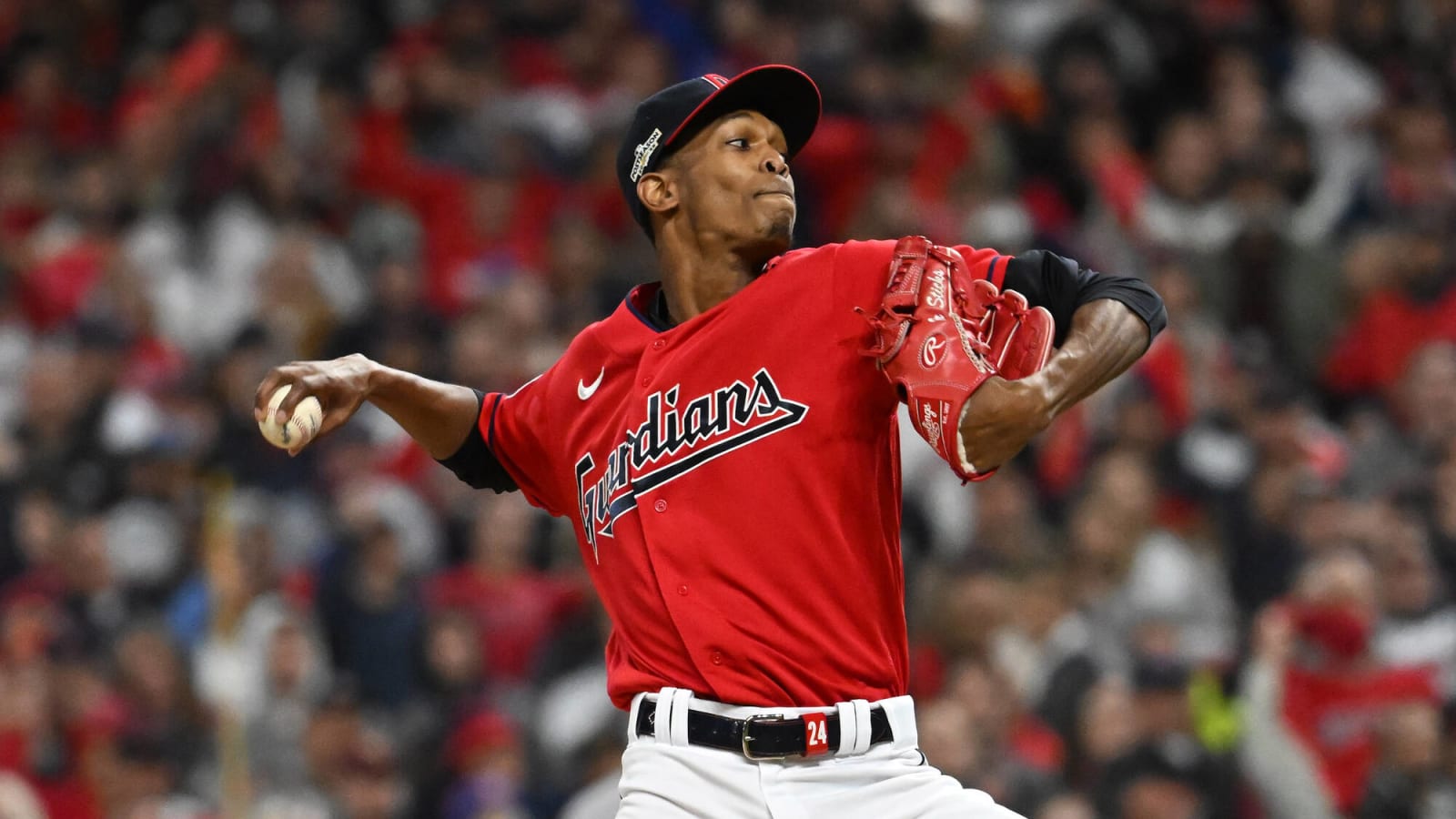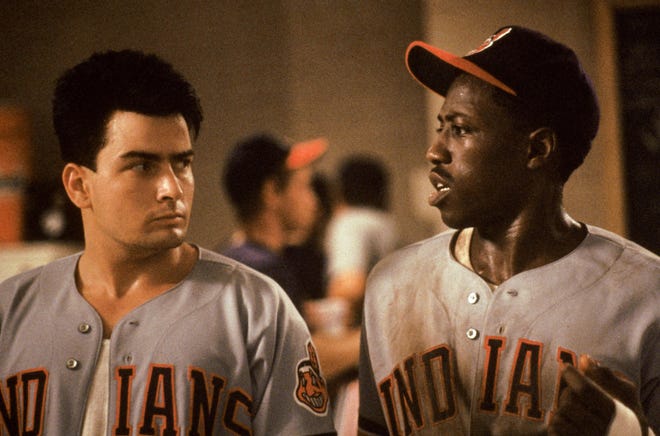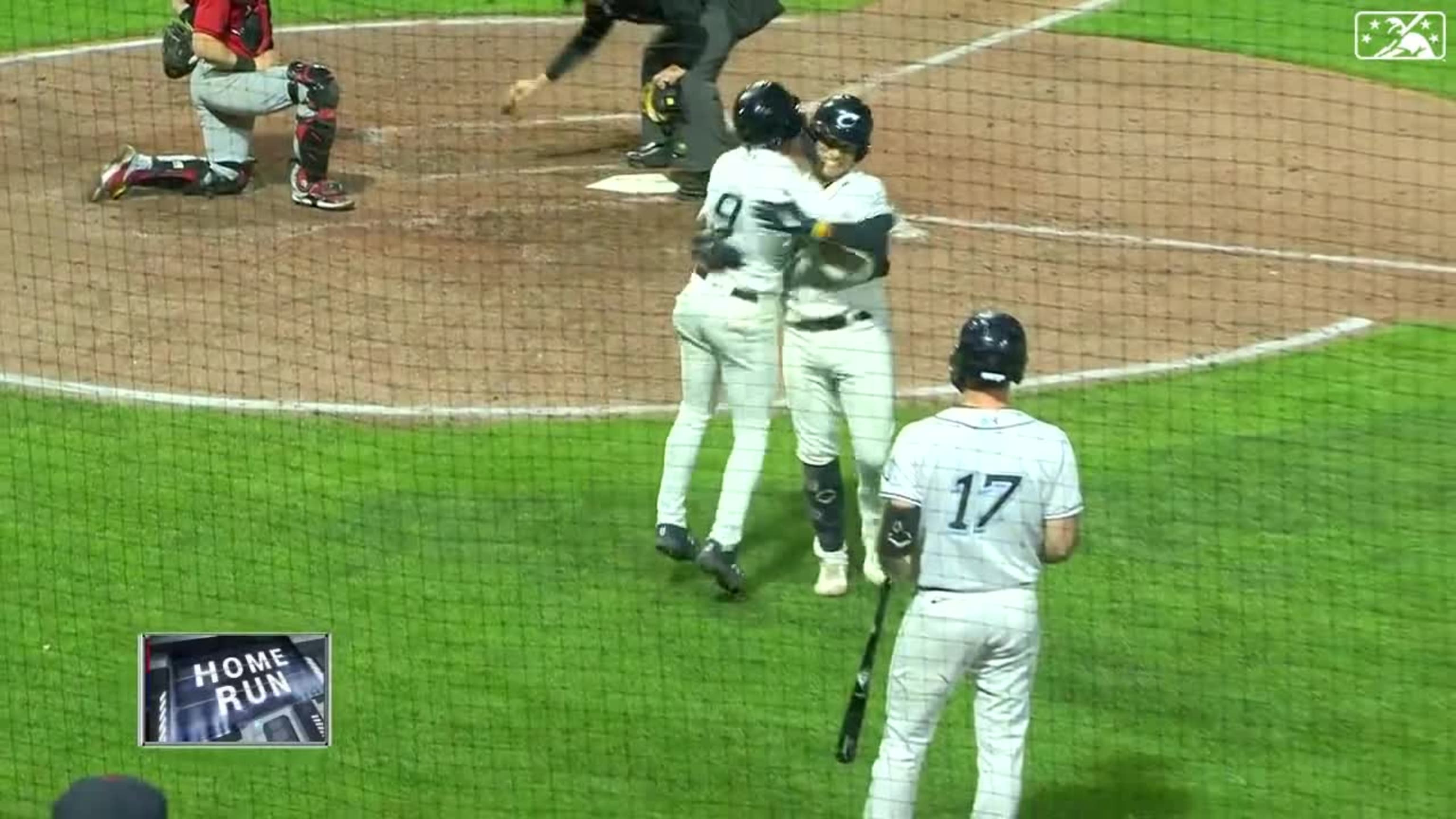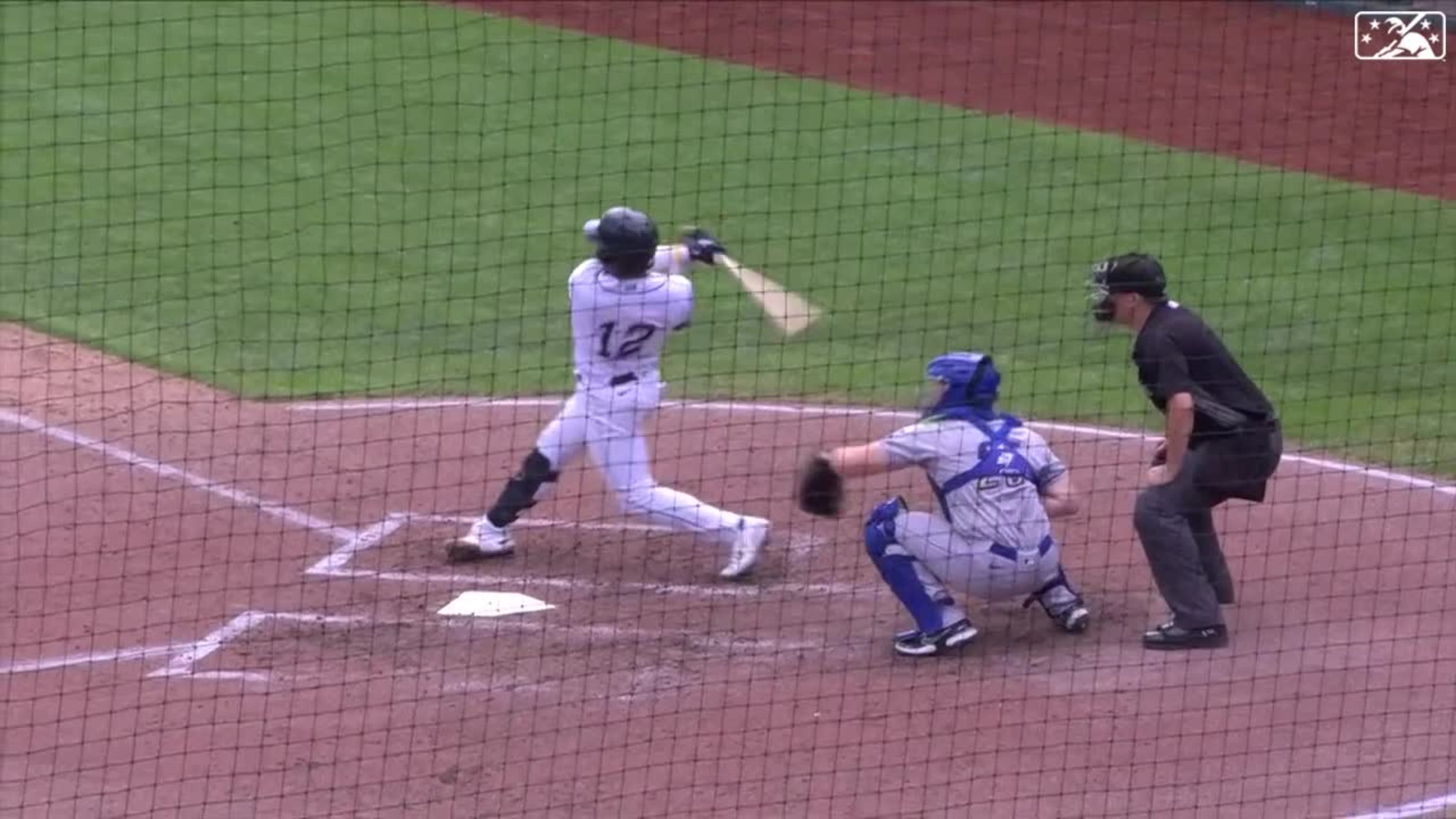
MLB club-by-club breakdown of players in 2023 Classic
February 9th, 2023
When the World Baseball Classic begins on March 8, we know you're going to scream for your country. But what about your favorite big league club? Want to know where your team's guys, Major and Minor Leaguers alike, are playing? You're in luck.
Below you'll find every player currently signed with a big league team and the country they'll be playing for.
Note: Players marked “DPP” are members of their team’s Designated Pitcher Pool. Each WBC team may choose up to 10 players as part of their pool -- these players are eligible to participate in one or more consecutive rounds of the WBC, but if replaced on their team's roster will be unavailable for the rest of the tournament. Affiliated players in Designated Pitcher Pools who are not actively on their team’s WBC roster during a given round will report to Spring Training with their Major League clubs.
Arizona Diamondbacks: Endrys Briceno, RHP (VEN – DPP), Dominic Fletcher, OF (ITA), Gunnar Groen, RHP (GBR – DPP), Merrill Kelly, RHP (USA), Ketel Marte INF/OF (DR), Eric Mendez, RHP (NED), Dominic Miroglio, C (ITA), Emmanuel Rivera, INF (PUR), Will Sherriff, LHP (AUS), Jacob Steinmetz, RHP (ISR), Mitchell Stumpo, RHP (ITA), Alek Thomas, OF (MEX), Boris Večerka, RHP (CZE).
Atlanta Braves: Ronald Acuña Jr., OF (VEN), Luis De Avila, LHP (COL - DPP), Roel Ramirez, RHP (MEX – DPP), Alan Rangel, RHP (MEX – DPP), Yacksel Ríos, RHP (PUR), Eddie Rosario, OF (PUR), Chadwick Tromp, C (NED).
Baltimore Orioles: Daniel Federman, RHP (ISR), Darwinzon Hernandez, LHP (VEN), Dean Kremer, RHP (ISR), Ryan Long, RHP (GBR), Cedric Mullins, OF (USA), Anthony Santander, OF (VEN).
Boston Red Sox: Jorge Alfaro, C (COL), Richard Bleier, LHP (ISR), Rafael Devers, INF (DR), Edwin Díaz, INF (PUR), Jarren Duran, OF (MEX), Kiké Hernández, INF/OF (PUR), Norwith Gudino, RHP (VEN – DPP), Rio Gomez, LHP (COL), Kenley Jansen, RHP (NED – DPP), Nick Pivetta, RHP (CAN), Alex Verdugo, OF (MEX), Masataka Yoshida, OF (JPN).
Chicago Cubs: Javier Assad, RHP (MEX), Owen Caissie, OF (CAN), Danis Correa, RHP (COL), Ben Deluzio, OF (ITA), Roenis Elías, LHP (CUB), Miles Mastrobuoni, INF (ITA), Matt Mervis, INF (ISR), B.J. Murray, INF (GBR), Michael Nittoli, RHP (ITA), Branden Noriega (GBR – DPP), Fabian Pertuz, INF (COL), Liam Spence, INF (AUS), Marcus Stroman, RHP (PUR), Seiya Suzuki, INF (JPN), Curtis Taylor, RHP (CAN), Nelson Velazquez, OF (PUR), Jared Young, INF (CAN).
Chicago White Sox: Tim Anderson, INF (USA), Kendall Graveman, RHP (USA), Eloy Jiménez (DR), Lance Lynn, RHP (USA), Yoán Moncada, INF (CUB), Nicholas Padilla, RHP (PUR), Luis Robert, OF (CUB), José Ruiz, RHP (VEN).
Cincinnati Reds: Donovan Benoit, RHP (GBR), Silvino Bracho, RHP (VEN), Luis Cessa, RHP (MEX), Fernando Cruz, RHP (PUR), Alexis Díaz, RHP (PUR), Arij Fransen, RHP (NED – DPP), Pedro Garcia, RHP (COL), Ian Gibaut, RHP (GBR), Kyle Glogoski, RHP (AUS), Tayron Guerrero, RHP (COL – DPP), Evan Kravetz, LHP (ISR), Brandon Leyton, INF (NCA), Nicolo Pinazzi, LHP (ITA), Henry Ramos, OF (PUR), Reiver Sanmartin, LHP (COL).
Cleveland Guardians: Dayan Frias, INF (COL), Andrés Giménez, INF (VEN), Bo Naylor, C (CAN), Richie Palacios, INF (NED), Cal Quantrill, RHP (CAN), Cade Smith, RHP (CAN), Meibrys Viloria, C (COL), Josh Wolf, RHP (ISR).
Colorado Rockies: Daniel Bard, RHP (USA), Jake Bird, RHP (ISR), Elias Díaz, C (COL), Justin Lawrence, RHP (PAN), Germán Márquez, RHP (VEN), Michael Petersen, RHP (GBR), Alan Trejo, INF (MEX).
Detroit Tigers: Javier Báez, INF (PUR), Miguel Cabrera, INF (VEN), Chavez Fernander, RHP (GBR), Jack O’Loughlin, LHP (AUS), Andy Ibáñez, INF (CUB), Eduardo Rodriguez, LHP (VEN), Jonathan Schoop, INF (NED), John Valente, INF (ITA)
Houston Astros: Bryan Abreu, RHP (DR), Jose Altuve, INF (VEN), Ronel Blanco, RHP (DR – DPP), Luis Garcia, RHP (VEN), Colton Gordon, LHP (ISR), Cristian Javier, RHP (DR), Martín Maldonado, C (PUR), Rafael Montero, RHP (DR), Héctor Neris, RHP (DR), Jeremy Peña, INF (DR), Ryan Pressly, RHP (USA), Kyle Tucker, OF (USA), José Urquidy, RHP (MEX), Derek West, RHP (NED).
Kansas City Royals: Ronald Bolaños, RHP (CUB), Max Castillo, RHP (VEN – DPP), Robert Glendinning, INF (AUS), Carlos Hernández, RHP (VEN), Nicky Lopez, INF (ITA), MJ Melendez, C (PUR), Vinnie Pasquantino, INF (ITA), Salvador Perez, C (VEN), Brady Singer, RHP (USA), Bobby Witt Jr., INF (USA).
Los Angeles Angels: Glenn Albanese, RHP (ITA – DPP), Jaime Barria, RHP (PAN), Gustavo Campero, C (COL), Alan Carter, RHP (CHN), Jhonathan Diaz, LHP (VEN – DPP), David Fletcher, INF (ITA), Jake Kalish, LHP (ISR – DPP), D’Shawn Knowles, OF (GBR), Shohei Ohtani, TWP (JPN), José Quijada, LHP (VEN), Luis Rengifo, INF (VEN), Gerardo Reyes, RHP (MEX), Patrick Sandoval, LHP (MEX), Mike Trout, OF (USA), Gio Urshela, INF (COL), César Valdez, RHP (DR – DPP), Zachary Weiss, RHP (ISR), Aaron Whitefield, OF (AUS).
Los Angeles Dodgers: Austin Barnes, C (MEX), Mookie Betts, OF (USA), Liam Doolan, RHP (AUS), Freddie Freeman, INF (CAN), Clayton Kershaw, LHP (USA), Adam Kolarek, LHP (ISR – DPP), Jose Ramos, OF (PAN), Miguel Rojas, INF (VEN), Will Smith, C (USA), Trayce Thompson, OF (GBR), Julio Urías, LHP (MEX).
Miami Marlins: Sandy Alcantara, RHP (DR), Luis Arraez, INF (VEN), Johnny Cueto, RHP (DR), Enmanuel De Jesus, LHP (VEN – DPP), Jesús Luzardo, LHP (VEN), Anthony Maldonado, RHP (PUR), Jean Segura, INF (DR).
Milwaukee Brewers: Willy Adames, INF (DR), Victor Castaneda, RHP (MEX – DPP), Alex Claudio, LHP (PUR – DPP), Sal Frelick, OF (ITA), Javy Guerra, RHP (PAN), Alex Hall, OF (AUS), Matt Hardy, RHP (PAN), Joel Payamps, RHP (DR – DPP), Carlos Rodriguez, RHP (NCA), Robert Stock, RHP (ISR), Rowdy Tellez, INF (MEX), Abraham Toro, INF (CAN), Luis Urías, INF (MEX), Michele Vassalotti, RHP (ITA), Devin Williams, RHP (USA).
Minnesota Twins: Jose De Leon, RHP (PUR), Edouard Julien, INF (CAN), Jorge López, RHP (PUR), Pablo López, RHP (VEN), Carlos Luna, RHP (PAN – DPP), Jose Miranda, INF (PUR), Jovani Moran, LHP (PUR), Emilio Pagán, RHP (PUR), Dereck Rodríguez, RHP (PUR), Christian Vázquez, C (PUR).
New York Mets: Pete Alonso, INF (USA), Jonathan Arauz, INF (PAN), Edwin Díaz, RHP (PUR), Eduardo Escobar, INF (VEN), Dominic Hamel, RHP (PUR), Elieser Hernandez, RHP (VEN – DPP), Francisco Lindor, INF (PUR), Jeff McNeil, INF/OF (USA), Humberto Mejia, RHP (PAN), Omar Narváez, C (VEN), Camrin Opp, LHP (GBR), Adam Ottavino, RHP (USA), José Quintana, LHP (COL), Brooks Raley, LHP (USA), Claudio Scotti, RHP (ITA).
New York Yankees: Nestor Cortes, LHP (USA), Indigo Diaz, RHP (CAN), Kyle Higashioka, C (USA), Jonathan Loáisiga, RHP (NCA), Gleyber Torres, INF (VEN).
Oakland Athletics: Denzel Clarke, OF (CAN), Jordan Diaz, INF (COL), Jake Fishman, LHP (ISR), Zack Gelof, INF (ISR), James Gonzalez, LHP (PAN), Adrian Martinez, RHP (MEX), Miguel Romero, RHP (CUB), Joshwan Wright, INF (PAN).
Philadelphia Phillies: José Alvarado, LHP (VEN), Erubiel Armenta, LHP (MEX), Malik Binns, RHP (GBR – DPP), Jesus Cruz, RHP (MEX), Jaydenn Estanista, RHP (NED), Vito Friscia, C (ITA), Vimael Machin, INF (PUR), Brian Marconi, LHP (ITA – DPP), J.T. Realmuto, C (USA), Kyle Schwarber, OF (USA), Noah Skirrow, RHP (CAN), Gregory Soto, LHP (DR), Garrett Stubbs, C (ISR), Ranger Suárez, LHP (VEN), Trea Turner, INF (USA), Taijuan Walker, RHP (MEX), Nick Ward, INF (GBR), Rixon Wingrove, INF (AUS).
Pittsburgh Pirates: David Bednar, RHP (USA), Tsung-Che Cheng, INF (TPE), Roansy Contreras, RHP (DR), Alessandro Ercolani, RHP (ITA – DPP), Santiago Florez, RHP (COL – DPP), Antwone Kelly, RHP (NED), Jeffrey Passantino, RHP (ITA – DPP), Josh Palacios, OF (NED), Tahnaj Thomas, RHP (GBR), Duane Underwood Jr., RHP (PUR), Chavez Young, OF (GBR), Rob Zastryzny, LHP (CAN)
San Diego Padres: Xander Bogaerts, INF (NED), Miguel Cienfuegos LHP (PAN), Nabil Crismatt, RHP (COL), Nelson Cruz, INF (DR), Jarryd Dale, INF (AUS), Yu Darvish, RHP (JPN), Jose Espada, RHP (PUR – DPP), Ruben Galindo, RHP (COL), Luis García, RHP (DR), Ha Seong Kim, INF (KOR), Manny Machado, INF (DR), Evan Mendoza, INF (COL), Jake Sanchez, RHP (MEX), Juan Soto, OF (DR), Brett Sullivan, C (ITA), Julio Teheran, RHP (COL – DPP).
San Francisco Giants: Jonathan Bermudez, LHP (PUR – DPP), Camilo Doval, RHP (DR), Joey Marciano, LHP (ITA), Joc Pederson, OF (ISR), Kai-Wei Teng, RHP (TPE).
Seattle Mariners: Matt Brash, RHP (CAN), Jose Caballero, INF (PAN), Diego Castillo, RHP (DR), Matt Festa, RHP (ITA), Harry Ford, C (GBR), Teoscar Hernández, OF (DR), Milkar Perez, INF (NCA), Julio Rodríguez, OF (DR), Eugenio Suárez, INF (VEN), Blake Townsend, LHP (AUS).
St. Louis Cardinals: Nolan Arenado, INF (USA), Génesis Cabrera, LHP (DR – DPP), Tommy Edman, INF (KOR), Giovanny Gallegos, RHP (MEX), Paul Goldschmidt, INF (USA), Ivan Herrera, C (PAN), L.J. Jones, OF (PAN), Joseph King, RHP (GBR), Matt Koperniak, OF (GBR), Noah Mendlinger, INF (ISR), Oscar Mercado, OF (COL), Miles Mikolas, RHP (USA), Lars Nootbaar, OF (JPN), Tyler O’Neill, OF (CAN), Andre Pallante, RHP (ITA), Wilfredo Pereira, RHP (PAN), JoJo Romero, LHP (MEX), Adam Wainwright, RHP (USA), Guillermo Zuniga RHP (COL).
Tampa Bay Rays: Jason Adam, RHP (USA), Jonathan Aranda, INF (MEX), Randy Arozarena, OF (MEX), Christian Bethancourt, INF (PAN), Trevor Brigden, RHP (CAN), Wander Franco, INF (DR), Andrew Gross, RHP (ISR), Joe LaSorsa, LHP (ITA), Francisco Mejía, C (DR), Isaac Paredes, INF (MEX), Harold Ramírez, OF (COL), Graham Spraker, RHP (GBR).
Texas Rangers: Mitch Bratt, LHP (CAN), Jose Leclerc, RHP (DR), Martín Pérez, LHP (VEN).
Toronto Blue Jays: José Berríos, RHP (PUR), Jiorgeny Casimiri, RHP (NED – DPP), Yimi García, RHP (DR), Vladimir Guerrero Jr., INF (DR), Spencer Horwitz, INF (ISR), Alejandro Kirk, C (MEX), Otto Lopez, INF (CAN), Luis Quinones, RHP (PUR – DPP).
Washington Nationals: Alberto Baldonado, LHP (PAN), Paolo Espino, RHP (PAN – DPP), Lucius Fox, INF (GBR), Andres Machado, RHP (VEN), Joey Meneses, INF (MEX), Tito Polo, OF (COL), Erasmo Ramírez, RHP (NCA), Rodney Theophile, RHP (NCA).
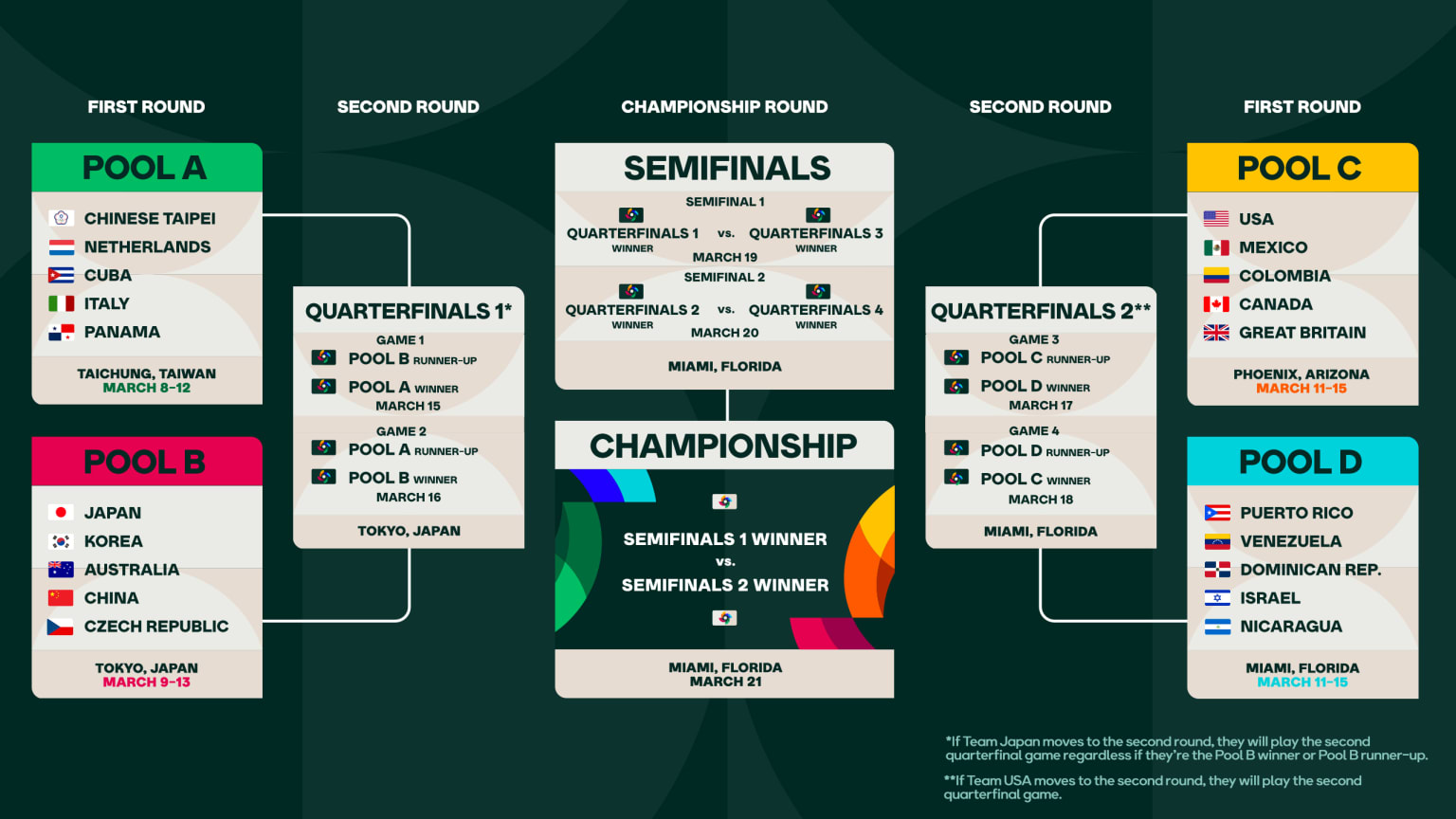
<



